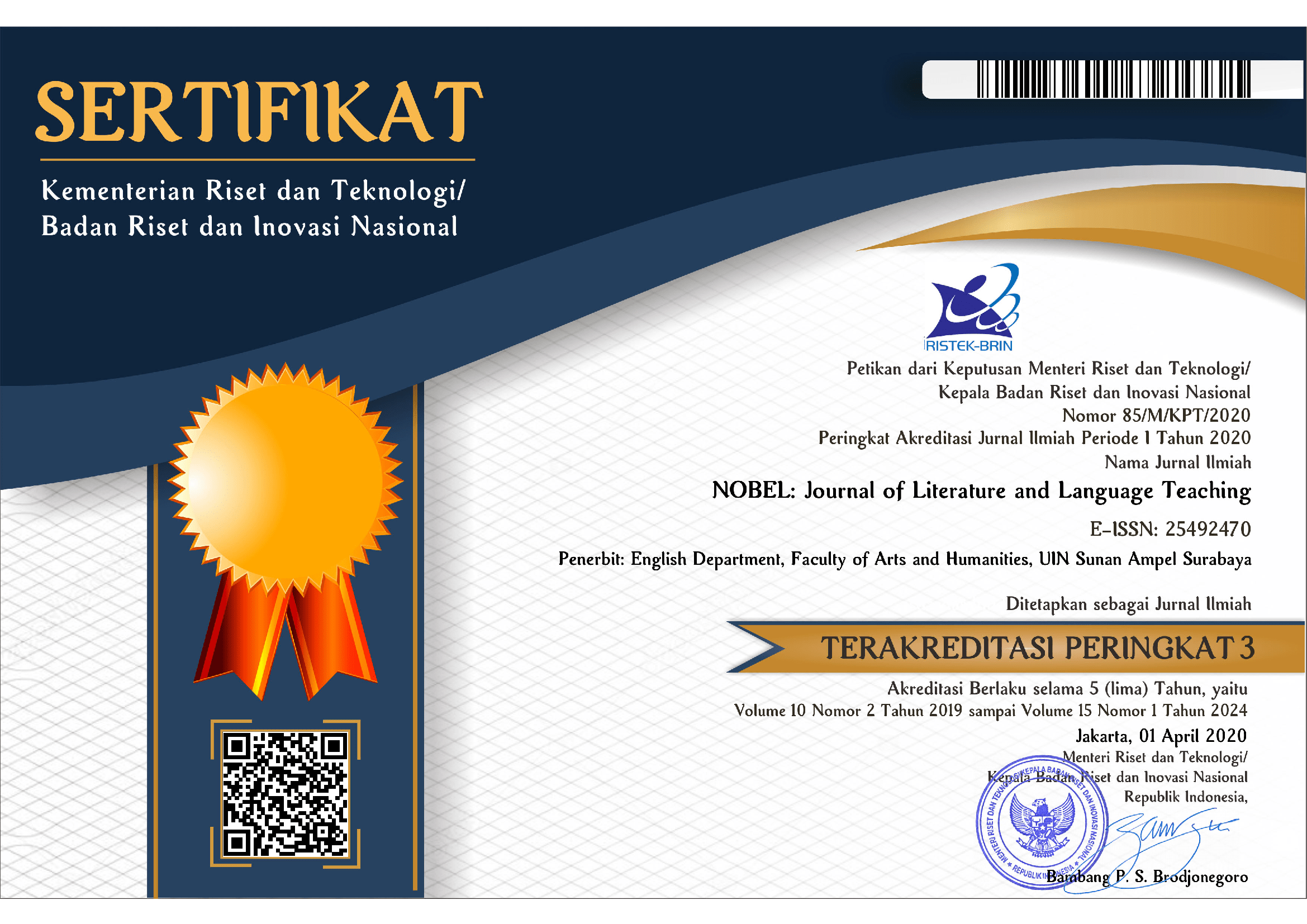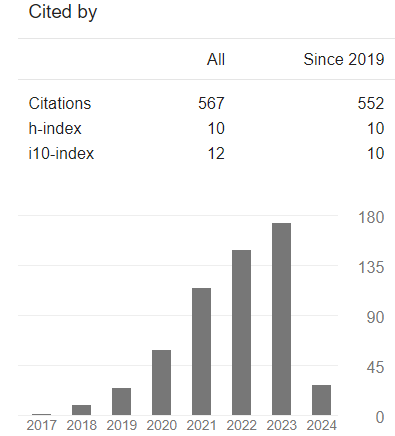English Language Exposure of Students in Visayas State University
DOI:
https://doi.org/10.15642/NOBEL.2020.11.2.178-187Keywords:
English; exposure; language; levelAbstract
The purpose of this study was to determine the level of language exposure toward the learning of the English language of the students in the Visayas State University. A learners’ exposure to the target language does have impact in language learning. Adapting a language exposure questionnaire, the researcher identified the activities that exposed students to the target language. With a scoring guideline, the researcher revealed the level of students’ exposure to the English language. Results of the study showed that more than half of the respondents have a moderate level of language exposure. Students were exposed most to the English language when they are at school or with the use of different media compared to when they are at home or communicating with friends. This result can be utilized both by teachers and students in engaging to appropriate activities both inside and outside the classroom that can help increase the learning of the English language.
Downloads
References
Dixon, D. (2015). Early exposure to English at home and at school prepares Spanish- speaking preschoolers for later academic success. http://munews.missouri.edu
Dulay, H. B. (1982). Language two. New York: Oxford University Press.
Ellorimo, R. (2014). Development of English in the Philippines.
Gamez, P. B. (2015). Classroom-based English exposure and English language learners' expressive language skills. Early Childhood Research Quarterly. 31(2), 135-146. DOI: 10.1016/j.ecresq.2015.01.007
Ismail, J. (2013). Language exposure and second language learning 1. Time Taylor International.
Lambine, C. (2008). English just isn't a foreign language anymore. Språk og språkundervisning, 2, 5-7.
Lee, M.L. (2011). 14 Differences in the learning anxieties affecting college freshman students of EFL. In Global Perspectives, Local Initiatives (pp. 169-182). Retrieved from http://www.nus.edu.sg/celc/research/books/3rdsymposium/169to182-lee.pdf
Magno et al. (2009). Assessing the level of English language exposure of Taiwanese college students in Taiwan and the Philippines. Asian EFL Journal. 11(1), 63-75. Retrieved from https://ir.csu.edu.tw/dspace/bitstream/987654321/1945/1/AEJ_March_2009_master.pdf#page=63
Malcolm, J., Hodkinson, P., & Colley, H. (2003). The interrelationships between informal and formal learning. Journal of Workplace Learning, 15(7/8), 313–318. DOI: 10.1108/13665620310504783
Molnar, M. (2013). English proficiency and English exposure. Skemman, 1946, 13802. (University of Iceland).
Myers-Scotton, C. (2006). Multiple voices: An introduction to bilingualism. USA: Wiley-Blackwell.
Peregoy, S. F., & Boyle, O. F. (2005). Reading, writing, and learning in ESL: A resource book for K12 teachers. Pearson/Ally & Bacon.
Phon, S. (2017). Factors affecting the English language proficiency of students majoring in English at a rural university in Cambodia. UC Occasional Paper Series. 1(1), 69-92. Retrieved from https://www.uc.edu.kh/userfiles/image/2017/10.%20UCOPS%20Vol%201_Iss%201_Final%20draft.pdf#page=75
Salazar, M. J. (2008). The decline of English proficiency. The Manila Bulletin.
Social Weather Station. 2012. Retrieved from https://www.sws.org.ph/swsmain/artcldisppage/?artcsyscode=ART- 20151211163553
Zoubi, S. A. (2018). The impact of exposure to English language on language acquisition. Journal of Applied Linguistics and Language Research. 5(4), 151-162.







